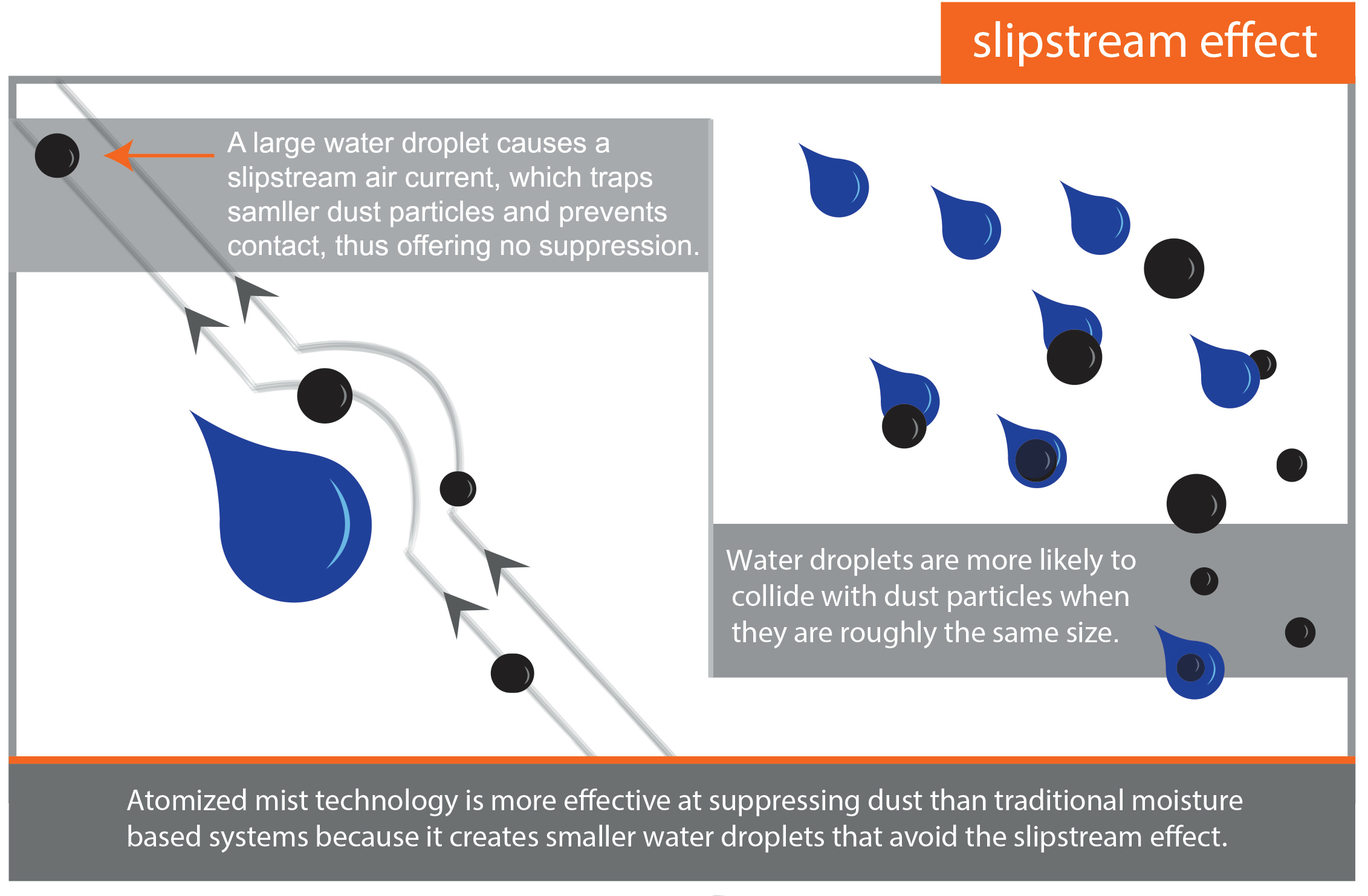 Dust suppression is an ongoing challenge in scrap handling and recycling operations. With raised awareness and tighter regulatory standards both contributing motivation for the industry to find efficient, cost-effective methods of fugitive particle control.
Dust suppression is an ongoing challenge in scrap handling and recycling operations. With raised awareness and tighter regulatory standards both contributing motivation for the industry to find efficient, cost-effective methods of fugitive particle control.
Dust can lead to:
- Respiratory problems.
- Higher equipment maintenance costs.
- Reduced visibility.
- Poor community relations.
- Increased worker sick days.
- Lower workplace morale.
For workers in high-dust areas, respiratory equipment and thorough training are always recommended, but a good dust management plan tackles the problem at its source. Most shredders and crushers have some kind of dust suppression technology built into them, but it’s limited to those machines, leaving facility managers to determine the best means for suppressing dust generated once material hits the open air.
Methods For Recyclers to Control Dust
Many companies use very basic water spraying techniques, such as sprinklers or hand-held hoses. These methods can help capture surface dust before it becomes airborne, but they have a tendency to saturate target surfaces, often resulting in standing water that can create additional hazards, especially in cold weather. The area coverage of these techniques also tends to be quite limited, frequently requiring significant staff time to man the hoses or reposition sprinkler heads.
But the greatest drawback is droplet size: water droplets produced from hoses and sprinklers are simply far too large to have any meaningful effect on airborne dust particles. Atomized mist creates tiny droplets roughly the same size as the dust and delivers them over a wide coverage area, where they collide with the dust particles, absorb them and drive them to the ground. The method has proven well suited to scrap processing and recycling applications, and remains one of the few technologies capable of delivering dust control via airborne capture, as well as providing surface wetting.
“We’ve logged thousands of hours in a wide range of industries and conditions across the world, including recycling centers,” said Laura Stiverson, President of Dust Control Technology. “Atomized mist has been proven to effectively pull fugitive particles out of the air without saturating ground-level material, dramatically cutting water volumes and runoff compared to hoses and sprinklers.”
Particle Size vs. Droplet Size
According to the National Institute of Environmental Health Services (NIEHS), dust particles become visual at approximately 50 microns in size. To put that into perspective, the average human hair is around 70 microns in diameter. Common dust particles from scrap recycling are often 200 microns or less, yet NIEHS estimates that rain droplets vary in size between 500-10,000 microns. Droplets from hoses and sprinklers are even larger.
In contrast, atomized mist droplets are generally in the range of 50-200 microns in size. Created with special nozzles that fracture the water flow, the mist is ejected from an engineered barrel by a powerful fan, creating a dense plume of droplet-rich air that can travel up to 100 meters.
Two things can happen when large droplets experience small dust particles:
Slipstream Effect - As a large droplet falls among tinier solid particles, its mass causes a rush of air to go around it (a “slipstream”). The smaller particles can get caught in this air stream, causing them to avoid the droplet, rather than colliding and being absorbed.
As airborne dust particles and water droplets approach each other, the best chance for a collision is created when they are roughly the same size, thus minimizing the slipstream effect. Atomized mist technology introduces millions of droplets per minute into the area, increasing their chances of coming in contact with dust particles.
Dry Splash - When large droplets hit stationary dust, the impact can cause surrounding dry particles to lift off the surface in a ground-level dust disruption or “dry splash,” becoming airborne and then migrating on ambient air currents. But when atomized droplets land, they have little disruptive impact and quickly absorb surface material.
Dust Suppression Coverage Area and Water Usage
From a water use perspective, large sprinklers for dust management can easily consume as much as 300 GPM (1,136 LPM), soaking the ground and debris. But even the largest atomized mist unit consumes less than a tenth of that amount. Machines that generate the mist come in various sizes. Smaller units are supplied by a common garden hose and cover around 31,000 square feet (2,880 square meters), whereas a large-scale model fed by a fire hose can blanket more than a quarter million square feet of area (more than 23,000 square meters), still only using approximately 30 GPM.
With the benefits it brings to scrap handlers and recycling operations, atomized mist technology has had a pronounced impact on facilities in dozens of different countries around the world, improving the work environment and considered by some to be an industry best-practice. As
regulatory scrutiny continues to grow, and with it our sense of environmental stewardship, it’s likely to be increasingly specified to help companies manage their fugitive dust.
Carl Harr serves as a technical sales specialist for Dust Control Technology. For more information stop by booth 1106 at the ISRI Convention and Exposition, April 21-25, in Vancouver, Canada. In addition, there will also be a session there, “Dust Suppression in Scrap Processing Applications.”